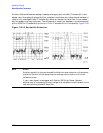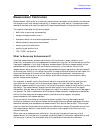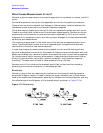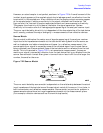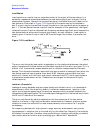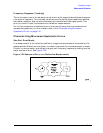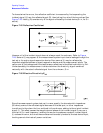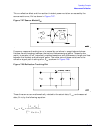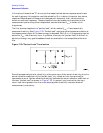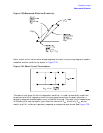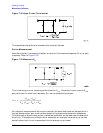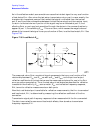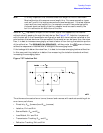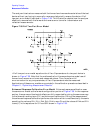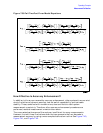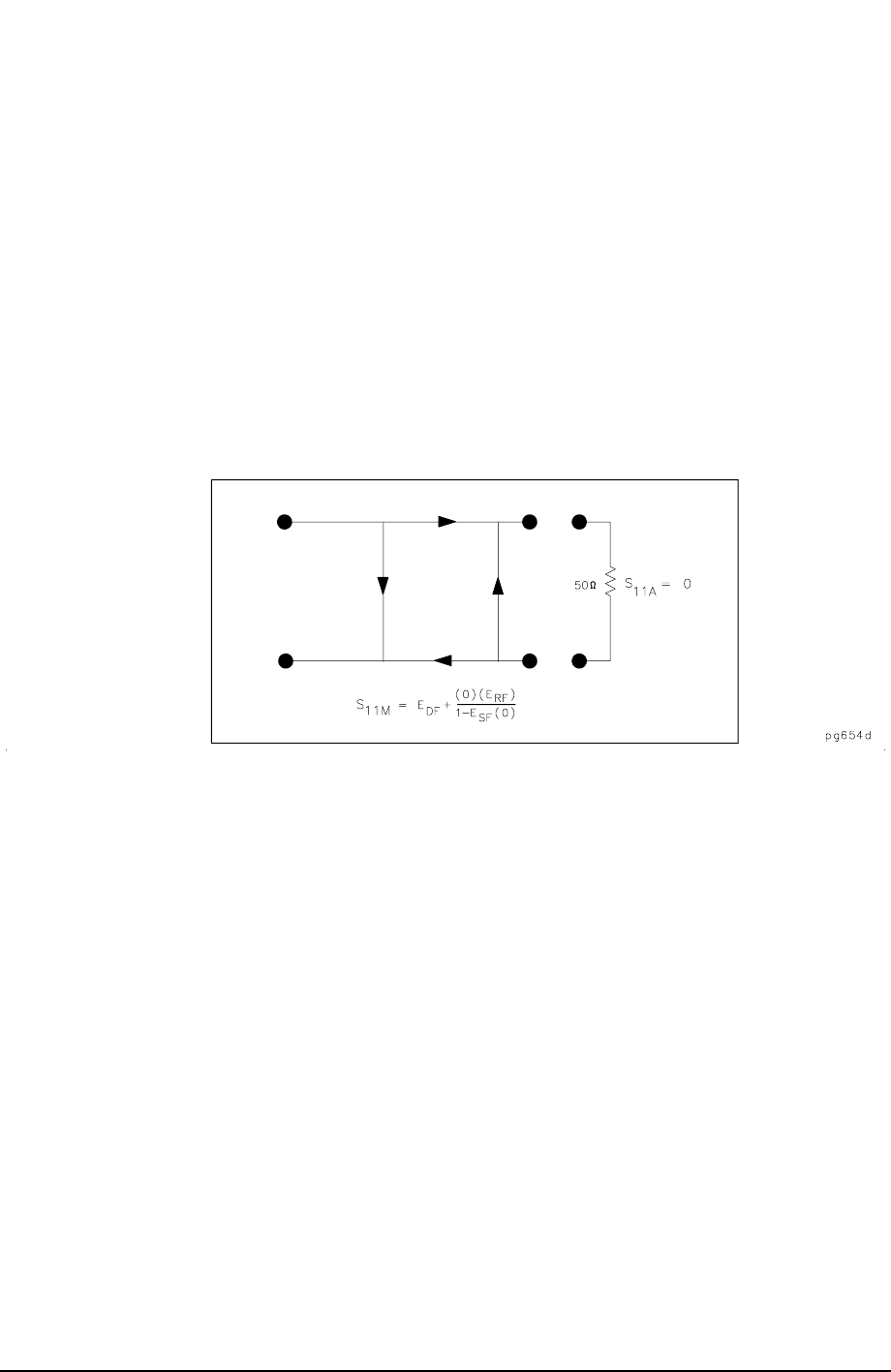
7-44
Operating Concepts
Measurement Calibration
If the value of these three "E" errors and the measured test device response were known
for each frequency, this equation could be solved for S
11A
to obtain the actual test device
response. Because each of these errors changes with frequency, their values must be
known at each test frequency. These values are found by measuring the system at the
measurement plane using three independent standards whose S
11A
is known at all
frequencies.
The first standard applied is a "perfect load," which makes S
11A
= 0 and essentially
measures directivity. See Figure 7-29. "Perfect load" implies a reflectionless termination at
the measurement plane. All incident energy is absorbed. With S
11A
= 0 the equation can be
solved for E
DF
, the directivity term. In practice, of course, the "perfect load" is difficult to
achieve, although very good broadband loads are available in the compatible calibration
kits.
Figure 7-29 "Perfect Load" Termination
Since the measured value for directivity is the vector sum of the actual directivity plus the
actual reflection coefficient of the "perfect load," any reflection from the termination
represents an error. System effective directivity becomes the actual reflection coefficient of
the near "perfect load" as shown in Figure 7-30. In general, any termination having a
return loss value greater than the uncorrected system directivity reduces reflection
measurement uncertainty.



